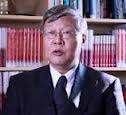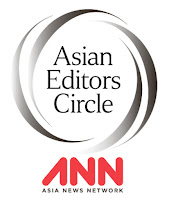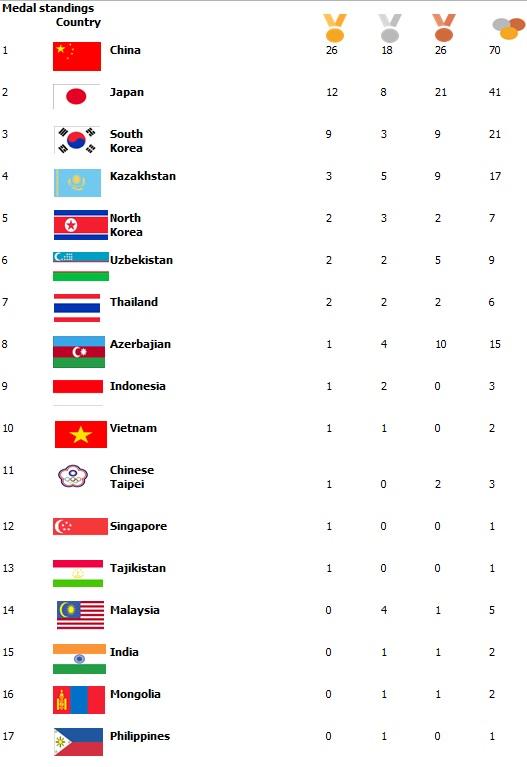https://youtu.be/tUCzHV3Vfe4
https://youtu.be/Hpw5ZMIo8NI
https://youtu.be/2jLWJWNtJro
https://youtu.be/WyL3x6eUKtI
https://youtu.be/1nRtQ8vFC0Q
https://youtu.be/y4CZ6FQHcVM
The 18th annual SCO summit in the Chinese port city of Qingdao this weekend is only the fourth held in China. Beijing is relaxed about its role in a growing organisation of eight member countries, six Dialogue Partners and four observer nations – a confidence that suggests considerable clout.
China and Russia are the two hulking members of a group that boasts formal parity, being the conspicuous “firsts among equals.” And as two consecutive US administrations unwittingly drive these giants closer than ever before strategically, Western attention is led astray.
Western reports track President Putin’s travel to Qingdao and the diplomatic niceties exchanged there. At the same time, Western commentators are tempted to dismiss the summit as yet another futile talkfest.
Both approaches are wrong or misplaced. While Xi-Putin exchanges may not be the highlight of this year’s SCO summit, neither are they insignificant.
Sloppy US policies helped to build a growing China-Russia alliance for a full decade now. This is evident enough from the meeting rooms of the UN Security Council to the battlefields of Syria to the South China Sea and the Baltics.
The latest SCO summit reaffirms the trend but adds only marginally to it by way of atmospherics. There are more important developments visible at, if not represented by, the Qingdao summit.
It is the first SCO summit at which both India and Pakistan arrive as full members.
Beginning as the Shanghai Five in the mid-1990s, the SCO has grown steadily and now incorporates three giants – China, Russia and India – in the great Eurasian land mass where both the US and the EU have scant inputs.
With Pakistan coming in at the same time as India as an equal partner, the SCO should be free from any sub-regional turbulence within South Asia.
Turkey is also an SCO Dialogue Partner whose interest in full membership is not without broader implications for the West.
Turkey has considerable military strength and is also a member of Nato, hosting its Allied Land Command and a US air base in Izmir. However, Ankara’s years-long effort to join the EU has been snubbed by Brussels.
Turkish President Recep Tayyip Erdogan has famously mulled over choosing between the EU and the SCO, reportedly preferring the latter. How would the West find a Nato member joining a non-Western group led by Russia and China?
Deep-seated discomfort would be a mild way to put a reaction in Brussels and Washington. To US policymakers, Turkey is a strategic country because of its location as well as its status as a prominent Muslim country.
Both China and Russia have sounded positive about Turkey’s prospective membership of the SCO. Nonetheless, SCO members share an understanding of sorts that Turkey may have to forego its Nato membership before SCO membership can be entertained.
However, Beijing and Moscow may be less concerned than Washington and Brussels about Turkey’s SCO membership with its Nato credentials intact. That immediately makes Turkey more comfortable to be in SCO company.
Turkey has already received what amounts to special treatment within the SCO that no other Dialogue Partner has enjoyed. Last year it was elected as Chair of the SCO’s Energy Club, a position previously enjoyed only by full members.
Erdogan has called the SCO “more powerful” than the EU, particularly in a time of Brexit. Bahrain and Qatar seek full SCO membership; Iraq, Israel, Maldives, Ukraine and Vietnam want to be Dialogue Partners; and Armenia, Azerbaijan, Bangladesh, Egypt, Nepal, Sri Lanka and Syria want Observer status.
Iran already has SCO Observer status and had applied for full membership in 2008. Following the easing of UN sanctions on Tehran, China declared its support for Iran’s membership bid in 2016.
The recent US pullout from the Joint Comprehensive Plan of Action (“Iran nuclear deal”) has further prodded Tehran to “look East.” These days that means China and a China-led SCO.
Iran already trades heavily with China with myriad deals in multiple sectors. Mutual interests abound, far exceeding the basic relationship of oil and gas sales to China.
As Europe treads carefully, mindful of possible new sanctions on Iran following the US cop out, cash-rich Chinese firms take up the slack. US policy is also pushing Iran, among others, closer to China.
In preparing for Prime Minister Modi’s arrival in Qingdao on Friday, Indian Ambassador Gautam Bambawale said both countries were determined to work in close partnership and would never be split apart.
This echoed two main points already shared by Indian and Chinese leaders – that their countries are partners in development and progress, and what they have in common are greater than their differences.
All of this seems set to undo the Quadrilateral Security Dialogue (Quad) that groups the US with Japan, Australia and India, all boasting a democratic system in common in a joint strategic encirclement of China. But India’s relations with China have been on the upswing for half a year now.
The day before Modi arrived in Qingdao, a Quad meeting in Singapore closed on Friday with India expressing differences with the other members. Its Ambassador to Russia Pankaj Saran said the Quad was not the same as its hopes for an inclusive “Indo-Pacific region” (IPR) that did not target any country.
He added that India wanted closer ties with Russia as well in an IPR. Just a fortnight before, Russia’s recent Ambassador to the US Sergei Kislyak said President Trump also wanted closer ties with Russia.
That was only a small part of the roller-coaster ride of international diplomacy in the first half of 2018.
In January Trump condemned the Taliban for a spate of attacks in Afghanistan, vowing that all talks with them were off. Until then, top US diplomats were carefully planning negotiations with the Taliban.
In March, US officials blasted Russia for allegedly arming the Taliban, which Moscow denied. The following month Nato voiced support for Afghan President Ashraf Ghani’s efforts to talk with the Taliban to “save the country.”
Meanwhile Trump’s ramparts of trade barriers in the direction of a trade war would decimate allies from East Asia to Europe. French President Emmanuel Macron expressed a European position in reaching out to China on climate and security issues.
By March the EU had dug in, preparing for the worst of US trade barriers while vowing retaliation. The WTO also warned Washington that it was veering towards a trade war with tariffs on steel and aluminium.
In April, China’s new Defence Minister Gen. Wei Fenghe arrived in Moscow for talks with his Russian counterpart Sergei Shoigu. Wei rubbed it in for Washington, publicly announcing that his visit was to show the US the high level of strategic cooperation between China and Russia.
Two days later the Foreign Ministers of China and Russia expressed similar sentiments. They championed negotiations and sticking to pledges while weighing in against the unilateralism of a unipolar power.
Where China has the SCO, Russia has the Eurasian Economic Union (EAEU).
If any discomfort is felt in Washington, it is from acting as a unipolar power in an increasingly multipolar world.
 Source: Behind the headlines by Bunn Nagara is a Senior Fellow at the Institute of Strategic and International Studies (ISIS) Malaysia.
Source: Behind the headlines by Bunn Nagara is a Senior Fellow at the Institute of Strategic and International Studies (ISIS) Malaysia.Related:
SCO momentum defies pessimistic predictions
Blaming China won't heal G7 internal woes
One 'rant,' rough talks sour G7 mood in confrontations with Trump
 Related posts:
Related posts:


















 Rio 2016 Olympic Games badminton mixed doubles winners - (from left) silver medallists Chan Peng Soon and Goh Liu Ying of Malaysia; gold medallists Tontowi Ahmad and Liliyana Natsir of Indonesia; and bronze medallists Zhang Nan and Zhao Yunlei of China. PHOTO: REUTERS
Rio 2016 Olympic Games badminton mixed doubles winners - (from left) silver medallists Chan Peng Soon and Goh Liu Ying of Malaysia; gold medallists Tontowi Ahmad and Liliyana Natsir of Indonesia; and bronze medallists Zhang Nan and Zhao Yunlei of China. PHOTO: REUTERS
 The medallists (from left): Silver medallist Chong Wei, gold medallist Chen Long and bronze medallist Viktor Axelsen on the podium at Riocentro Pavilion 4. - AZHAR MAHFOF / The Star
The medallists (from left): Silver medallist Chong Wei, gold medallist Chen Long and bronze medallist Viktor Axelsen on the podium at Riocentro Pavilion 4. - AZHAR MAHFOF / The Star

